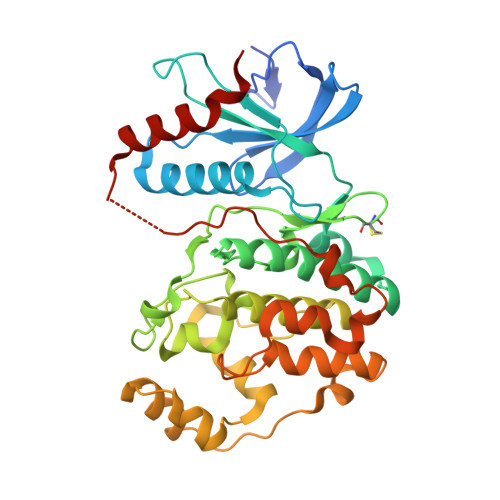In-plate protein crystallization, in situ ligand soaking and X-ray diffraction.
le Maire, A., Gelin, M., Pochet, S., Hoh, F., Pirocchi, M., Guichou, J.F., Ferrer, J.L., Labesse, G.(2011) Acta Crystallogr D Biol Crystallogr 67: 747-755
- PubMed: 21904027
- DOI: https://doi.org/10.1107/S0907444911023249
- Primary Citation of Related Structures:
3QYU, 3QYW, 3QYZ - PubMed Abstract:
X-ray crystallography is now a recognized technique for ligand screening, especially for fragment-based drug design. However, protein crystal handling is still tedious and limits further automation. An alternative method for the solution of crystal structures of proteins in complex with small ligands is proposed. Crystallization drops are directly exposed to an X-ray beam after cocrystallization or soaking with the desired ligands. The use of dedicated plates in connection with an optimal parametrization of the G-rob robot allows efficient data collection. Three proteins currently under study in our laboratory for ligand screening by X-ray crystallography were used as validation test cases. The protein crystals belonged to?different space groups, including a challenging monoclinic case. The resulting diffraction data can lead to clear ligand recognition, including indication of alternating conformations. These results demonstrate a possible method for automation of ligand screening by X-ray crystallography.
Organizational Affiliation:
Universit¨¦ Montpellier 1 et 2, Centre de Biochimie Structurale, France.




















